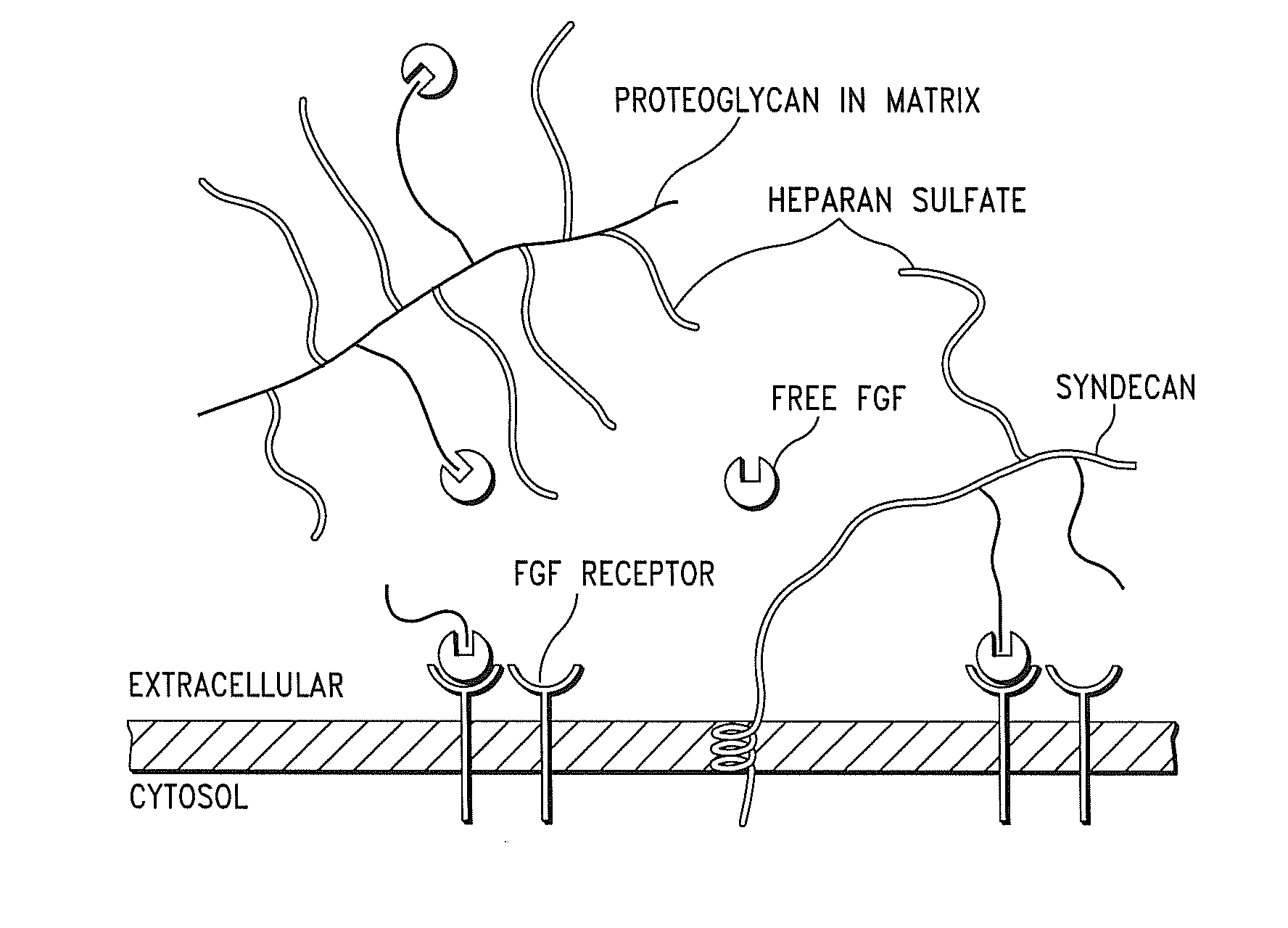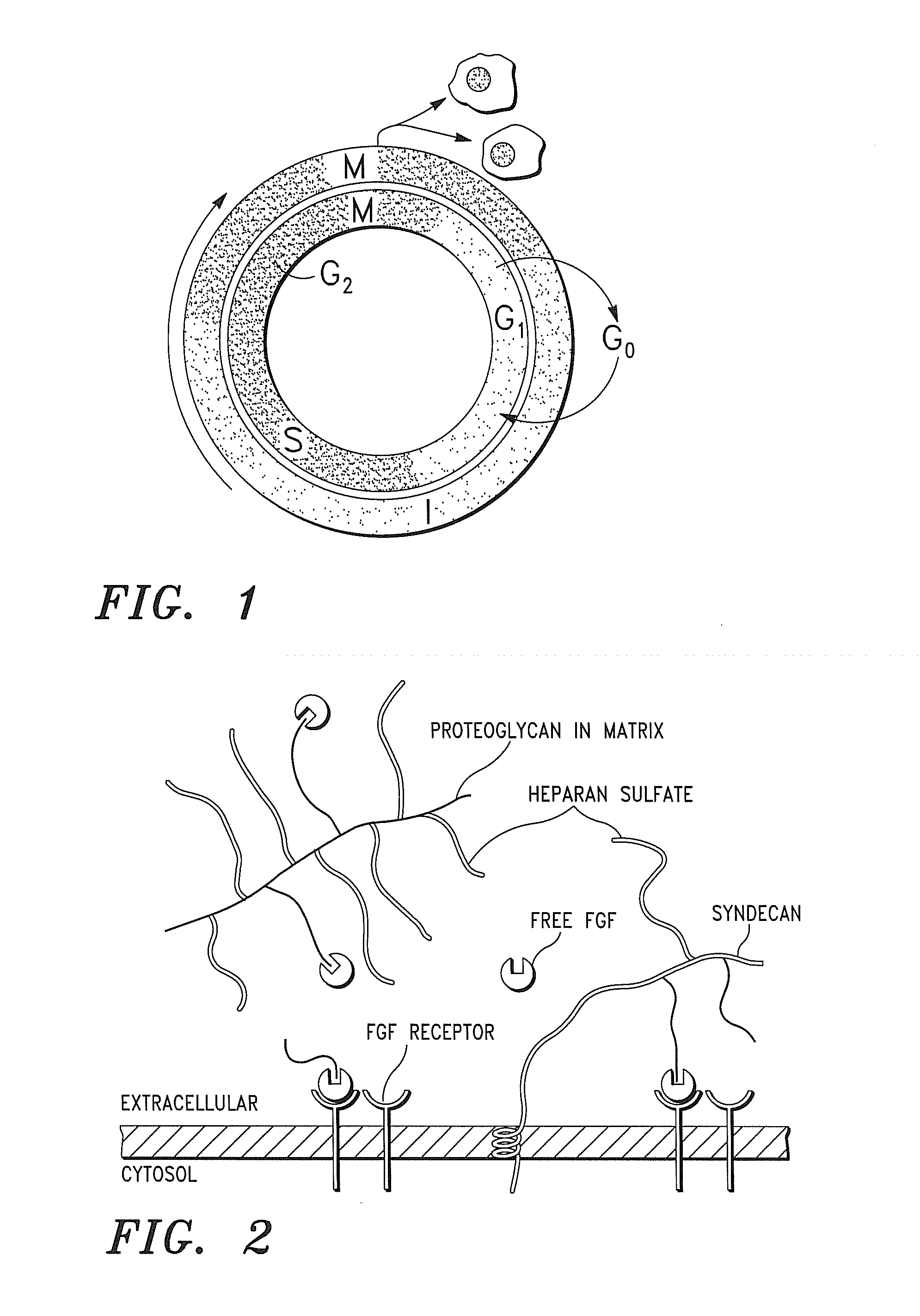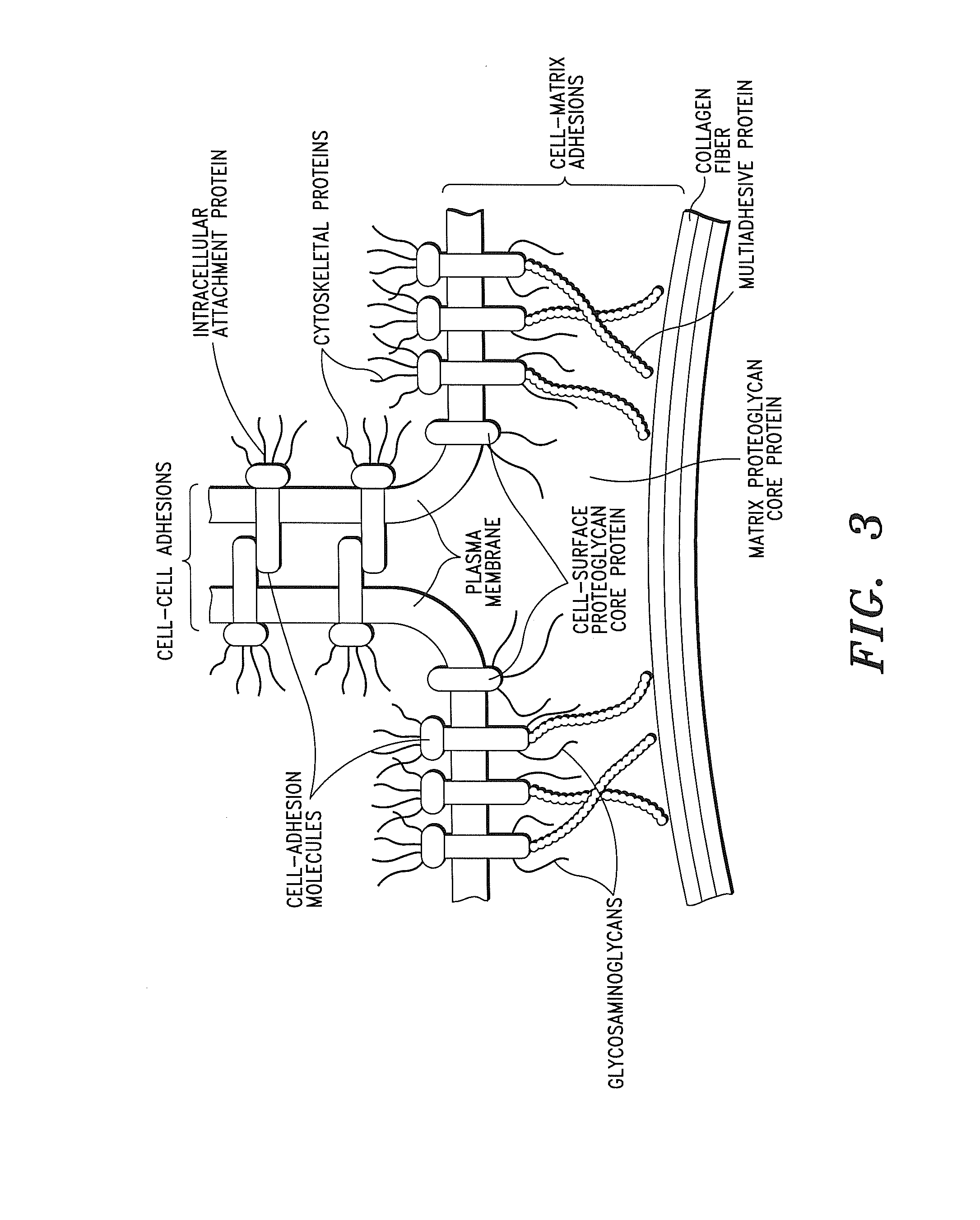Compositions and Methods for Treating Organ Dysfunction
a technology of organ dysfunction and compositions, applied in the field of compositions and methods for treating organ dysfunction, can solve the problems of cell progeny ageing or self-destructing, cell degeneration or impairment of physical structure and/or function of the organ associated therewith, and cell progeny is non-viable, so as to increase or prolong the lifespan and retard the degradation rate of cells
- Summary
- Abstract
- Description
- Claims
- Application Information
AI Technical Summary
Benefits of technology
Problems solved by technology
Method used
Image
Examples
example 1
[0177]A forty-five (45) year old male patient presents with pre-mature liver failure. A cell sample is secured from the patient's liver and analyzed. The analysis indicates that the cells in the liver had entered a senescent phase.
[0178]An ECM composition of the invention comprising adolescent extracellular matrix comprising small intestine submucosa and an exogenously added cytokine comprising interlukin-10 (IL-10) is administered to the liver of the patient.
[0179]Sixty (60) days after the ECM composition is administered a further cell sample was secured from the patient's liver. The post-ECM composition administration analysis reflects that the rate of degradation of the liver cells has ceased. The analysis further reflects that the length of the telomeres associated with the cells has increased.
[0180]As will readily be appreciated by one having ordinary skill in the art, the present invention provides numerous advantages compared to prior art methods and systems for treating orga...
PUM
| Property | Measurement | Unit |
|---|---|---|
| concentration | aaaaa | aaaaa |
| concentration | aaaaa | aaaaa |
| concentration | aaaaa | aaaaa |
Abstract
Description
Claims
Application Information
 Login to View More
Login to View More - R&D
- Intellectual Property
- Life Sciences
- Materials
- Tech Scout
- Unparalleled Data Quality
- Higher Quality Content
- 60% Fewer Hallucinations
Browse by: Latest US Patents, China's latest patents, Technical Efficacy Thesaurus, Application Domain, Technology Topic, Popular Technical Reports.
© 2025 PatSnap. All rights reserved.Legal|Privacy policy|Modern Slavery Act Transparency Statement|Sitemap|About US| Contact US: help@patsnap.com



